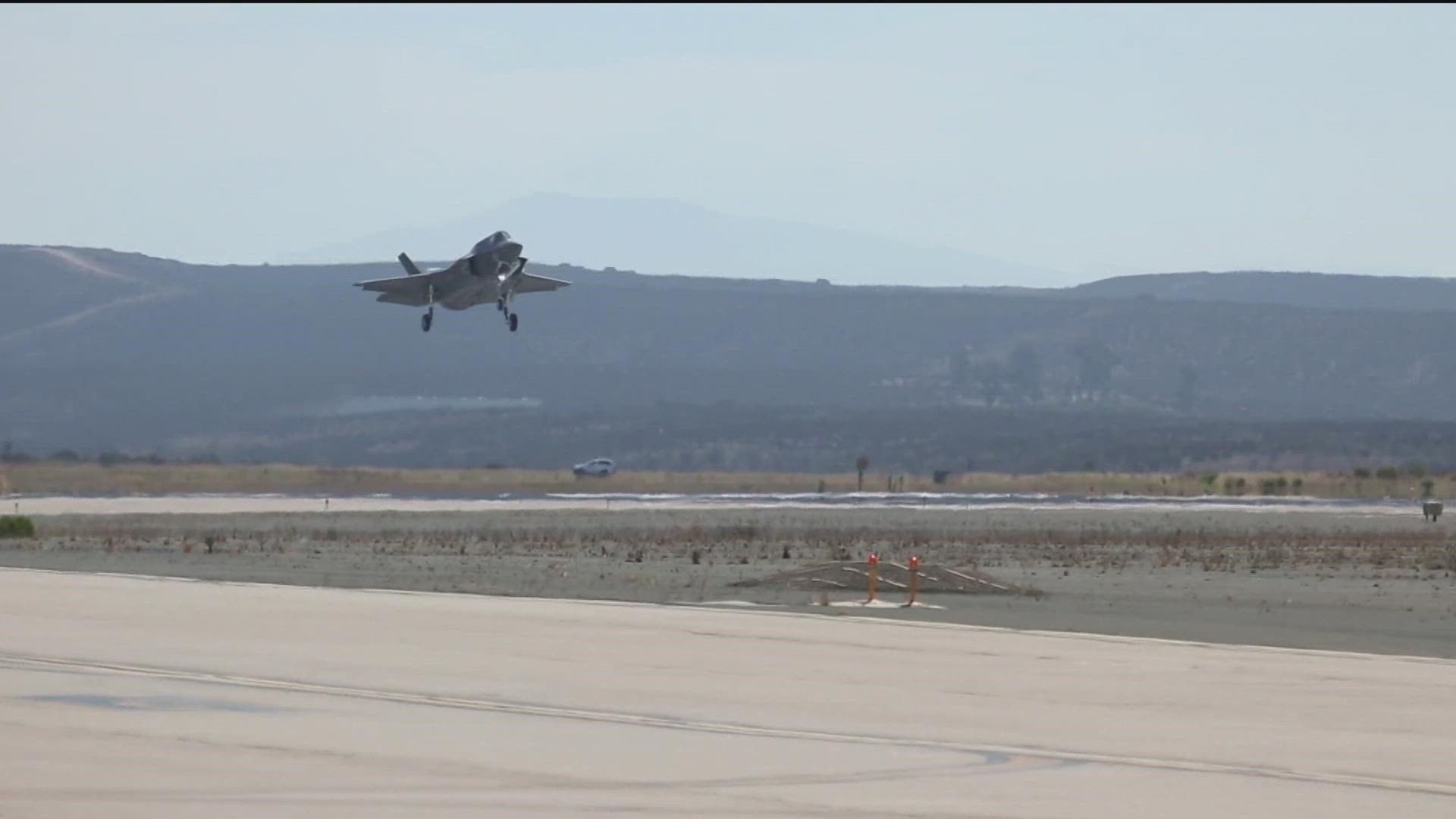SAN DIEGO — One of the jets that will be featured at the Miramar Air Show is the F-35. The fighter jet is a multi-role combat aircraft that can literally take your breath away.
And at speeds of 1,200 mph, it can break the sound barrier.
"There's a lot of excitement and adventure in that realm," said Seth Stewart, who flies the F-35 for Marine Corps Air Station Miramar. Stewart trains daily at the highest level.
"Turning quickly is very important for air combat, the faster you can turn, the better you can turn up there and beat your adversary."
That combination of speed and agility makes for a unique experience in the sky. The gravitational force, better known as "G-force," can be described as a measurement of the type of force per unit of mass.
"7 G's would be 7x the force of gravity," Stewart said. For perspective, people on earth feel one "G" on a daily basis.
Experiencing the force of gravity at that high of a level causes some people to feel nauseous or dizzy, get tunnel vision and ultimately pass out.
"When you have that kind of pressure, there is a disruption to the blood flow." said Doctor Jyotu Sandhu with Sharp Reese Steely. Dr. Sandhu also happens to be a Reservist in the Navy. "Ultimately it all depends on blood flow to the brain and fighting gravity."
Pilots are equipped with special inflatable suits that provide extra "G" tolerance, but pilots are also taught to flex their legs and abs to help stay conscious. There's also something called the Hick Maneuver, in which you essentially grunt to keep blood flowing. But some people's bodies are better suited to fighting the forces of gravity.
"Back in the day, they would refer to them as G monsters - people who could handle it better than others," Stewart said. "Usually those people are shorter, stockier and have higher blood pressure."

